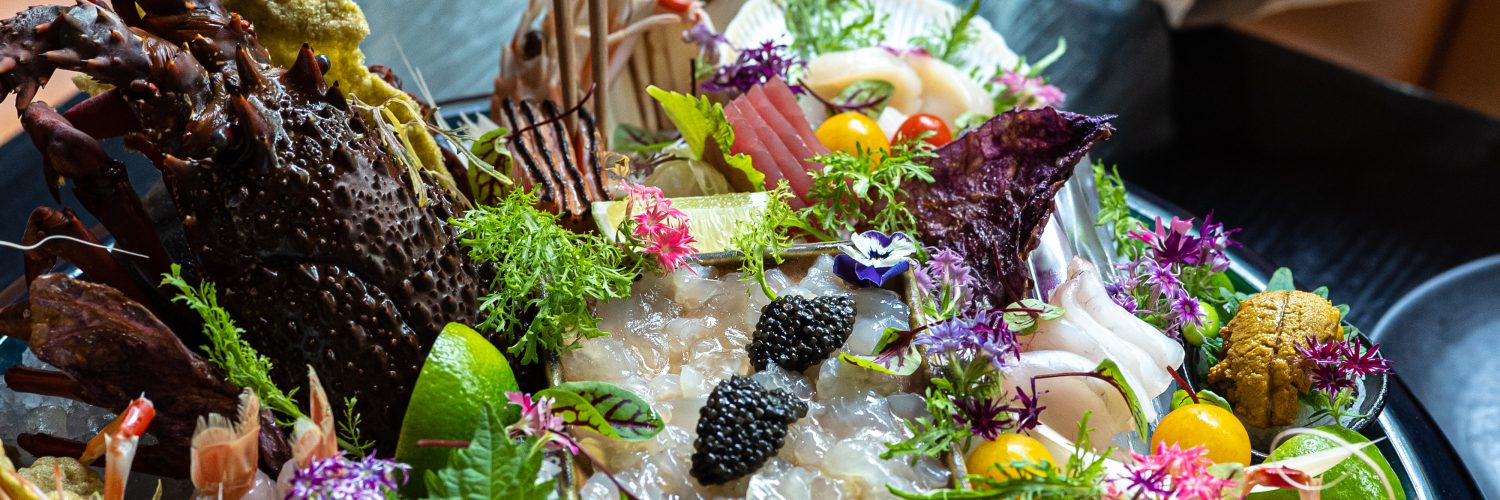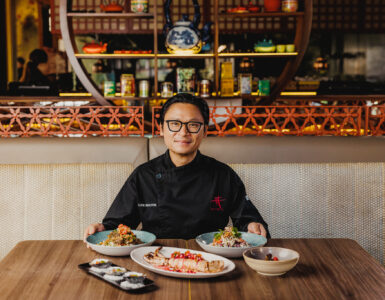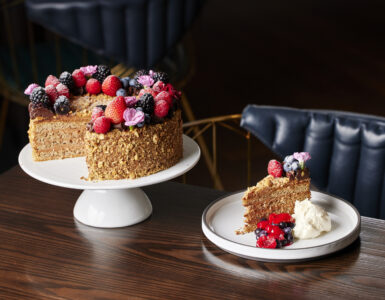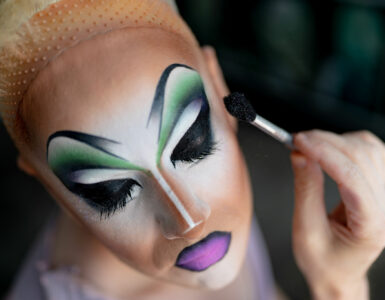It may taste great but getting food to look good in photos is another story. We ask food stylist Lucy Tweed for her top tips on putting together the perfect plate.
If you can’t figure out why your Instagram is filled with picture-perfect plates of delicious food while you’re serving up something that could be featured on the show Nailed It!, you’ve come to the right place. As many of us learn the hard way: what may look like a fresh bowl of yoghurt, fruit and muesli in person, looks more like a masticated mess in photos.
“You could build a perfect burger, but unless you can see the the juiciness of the meat, the ooze of cheese, the drizzle of sauce and freshness of the lettuce then the ‘invite to bite’ is just not there.” Lucy Tweed
For food stylist, food writer and event stylist Lucy Tweed, eating should be a sensory experience. “Making it look good is one thing,” she says “but can you make it look absolutely luscious?” Preparing food for an event or real-time dinner party is a whole different kettle of fish compared to styling food for photos – and Lucy should know, she styled the Sydney welcome event for Oprah and has several years experience as Donna Hay’s in-house stylist.
“When styling food for Instagram I am far more drawn to making sure the deliciousness is captured than something that’s technically pretty,” says Lucy. “You could build a perfect burger, but unless you can see the the juiciness of the meat, the ooze of cheese, the drizzle of sauce and freshness of the lettuce then the ‘invite to bite’ is just not there.”
Get the lighting right
Just because you don’t have an in-house studio doesn’t mean you can’t manipulate the space in your home to get the perfect glow. “Ideally you want to find a spot at home that has nice even natural sidelight – near a window but without direct sunlight streaming in,” suggests Lucy. Direct sunlight can wash out the subject and create unwanted shadows – it may seem counterintuitive, but a cloudy day is the best time for a photoshoot.
If you don’t have natural light in abundance, turn off any overhead lights and opt for a low-watt, cool bulb shined from the side. Specific apps – such as Foodie – or post-production programs like Adobe Photoshop can help liven up dull-looking shots as well.

Work those angles
According to Lucy, there are three angles for food photography you can play with: point of view (POV), over the top (OTT) and low.
OTT: this is a bird’s eye view of the food or dinner table. This shot can work well for expansive tables that include multiple dishes, styling accessories and objects/hands to show scale and draw the eye to a particular point. Get resourceful by pulling up a chair to stand on or place the dish on the ground so you can get some height.
POV: still a top down view but much closer. “Imagine the angle you view your food from when sitting down to eat it,” suggests Lucy.
Low: this could be a side view shot of a particular item. “Low is great for drinks and burgers, although it means you need to consider what’s happening in the background,” says Lucy.
Manufacturing the mouth water
Taking your food from ‘meh’ to ‘OMG get in my mouth’ comes down to a few mouth-watering tricks that food stylists have up their sleeves. Ignore what your parents may have taught you about playing with your food – creating a perfectly styled food shot will take a few techniques and added touches. “Play around with portrait mode so the background disappears. You want your viewer to feel like they are the ones about to devour this dish. Or they get FOMO that they aren’t!”
Lucy’s food styling hacks:
- Freshness – keep herbs in iced water until the moment you are about to shoot.
- Juiciness – keep meat looking the part by pouring pan juices over the top.
- Sauciness – always dress a salad in some light oil for sparkle and only add sauce or gravy right before you shoot, so it’s glossy.
- Last minute sprinkles – salt, pepper, chilli flakes, lemon zest or parmesan.
Plating up pitfalls to avoid
“The golden rule for styling is to try and use colours, textures and fibres that are harmonious or natural. Unless your goal is to create a jarring and contrasting stylised shoot, let the food shine and everything else be softer,” says Lucy.
I know we said earlier that you’re allowed to play with your food, but overdoing it can ruin a perfectly good shot. “Keep it natural, go in close, and think about why it looks yum to you and try and capture that,” suggests Lucy.
Context is everything
A large part of food styling is understanding the context in which the images will appear or who the food will be served to. What looks great for an in-person event may not translate well in an Instagram feed – and vice versa. Styling food for photos is about capturing a moment: immediately after finishing a dish, partway through or before you begin eating. “This can be achieved with a little bit of considered mess, a few crumbs, a rogue herb – basically the moment any food looks it’s best,” says Lucy.














